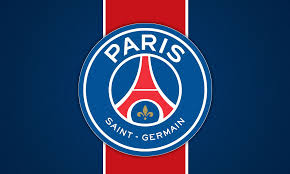
Understanding Correct Score Odds in Sports Betting
One of the most thrilling markets in sports betting is correct score odds. Predicting the exact final score offers a unique challenge with high potential rewards. To improve accuracy, understanding the game and analyzing key factors is crucial.
Readmore: kèo nhà cái
Correct score odds are unique because they require not just a sense of which team will win or lose but also an understanding of how many goals or points will be scored. This complexity makes it both an attractive and challenging betting option for participants at all levels, from amateurs to seasoned professionals.
Understanding Correct Score Odds in Sports Betting
The concept of correct score odds revolves around the notion that predicting the precise outcome of a sporting event can yield significant rewards. Unlike traditional betting options such as moneyline or spread betting, where bettors focus on who will win or lose, correct score betting demands an additional layer of insight and prediction.
One of the primary reasons bettors gravitate toward correct score odds is the potential for higher payouts. Because predicting the exact score of a match is inherently more difficult than simply picking a winning team, bookmakers set the odds accordingly. Consequently, a successful bet on the correct score can yield rewards far exceeding those offered by standard betting lines.
Types of Sports Suitable for Correct Score Betting
Not all sports lend themselves equally well to correct score betting. Typically, sports where scoring events are less frequent, such as soccer, cricket, and hockey, present the best opportunities for this type of wager.
In soccer, for instance, matches often end with low scores, making the task of predicting the correct score both challenging and thrilling. Soccer matches can frequently finish 1-0, 2-1, or even 0-0, providing various combinations for bettors to consider.
On the other hand, sports like basketball or American football tend to have higher scoring games, resulting in a wider range of possible outcomes. In these instances, while betting on the correct score is still possible, the odds may not be as favorable due to the increased frequency of scoring, thereby diluting the potential returns.
The Importance of Research and Analysis
Success in correct score odds ventures heavily upon thorough research. Bettors must analyze past performances, player stats, and other relevant data that may influence a game’s outcome. Team form, head-to-head records, and even weather conditions can play pivotal roles in determining the final score.
With numerous variables at play, conducting meticulous research empowers bettors to make informed decisions. By delving deeper into a team’s attacking and defensive capabilities, understanding how they perform under different circumstances, and assessing potential strategies employed by coaches, bettors can improve their likelihood of making accurate predictions.
Variability in Scoring Patterns
Understanding scoring patterns within specific leagues, tournaments, or teams can vastly change how one approaches correct score betting. For example, some teams may struggle to score against certain opponents, while others consistently find the net. Early-season scoring trends might differ significantly from late-season dynamics as teams battle for playoffs or relegation fights.
Betting on a correct score is not just about numbers; it involves interpreting trends and narratives surrounding each match. By keeping abreast of these variations, bettors can enhance their ability to predict outcomes accurately.
How to Calculate Correct Score Odds
To make the most of these bets, it’s essential to know how to interpret and calculate correct score odds. Learning to convert odds into implied probabilities can give bettors a strategic edge.
Visit my site: LIVESCORE
At its core, calculating correct score odds involves converting bookmaker odds into percentages to ascertain the implied probability of a particular outcome occurring. By doing so, bettors can gauge whether a given bet represents value based on their own assessment of the match.
Understanding Odds Formats
Before diving into calculations, it’s crucial to grasp the various formats of odds. The most common formats include fractional odds, decimal odds, and moneyline odds.
- Fractional Odds: Represent the profit relative to the stake. For example, if the odds are 5/1, a successful $1 bet would yield $5 in profit.
- Decimal Odds: Show the total payout (stake plus profit) per unit wagered. A decimal odd of 6.00 means that a $1 bet would return $6 if successful.
- Moneyline Odds: Typically used in American sportsbooks, positive and negative values indicate how much you can win or how much you need to wager.
Understanding these formats allows bettors to quickly assess potential returns when placing correct score odds bets.
Calculating Implied Probability
Once familiar with odds formats, bettors can convert them into implied probabilities. For fractional odds, divide the denominator by the sum of the numerator and denominator. For instance, the fractional odds of 5/1 imply a probability of 1/(5+1) = 1/6 or approximately 16.67%.
For decimal odds, the calculation is straightforward: take 1 divided by the decimal odds. If the odds are 6.00, the probability becomes 1/6, equal to 16.67%. These calculations help determine if a bet offers good value considering the bettor’s own expectations and analysis of the match.
Evaluating Potential Returns
After establishing the implied probability, bettors should then evaluate their potential returns. If a bettor places a bet of $10 on a correct score with fractional odds of 5/1, their total return would be $10 (stake) + $50 (profit), equating to $60.
By continuously evaluating both the implied probabilities and potential returns, savvy bettors can identify opportunities where their judgments align with bookmaker assessments, ultimately guiding them toward profitable wagers.





